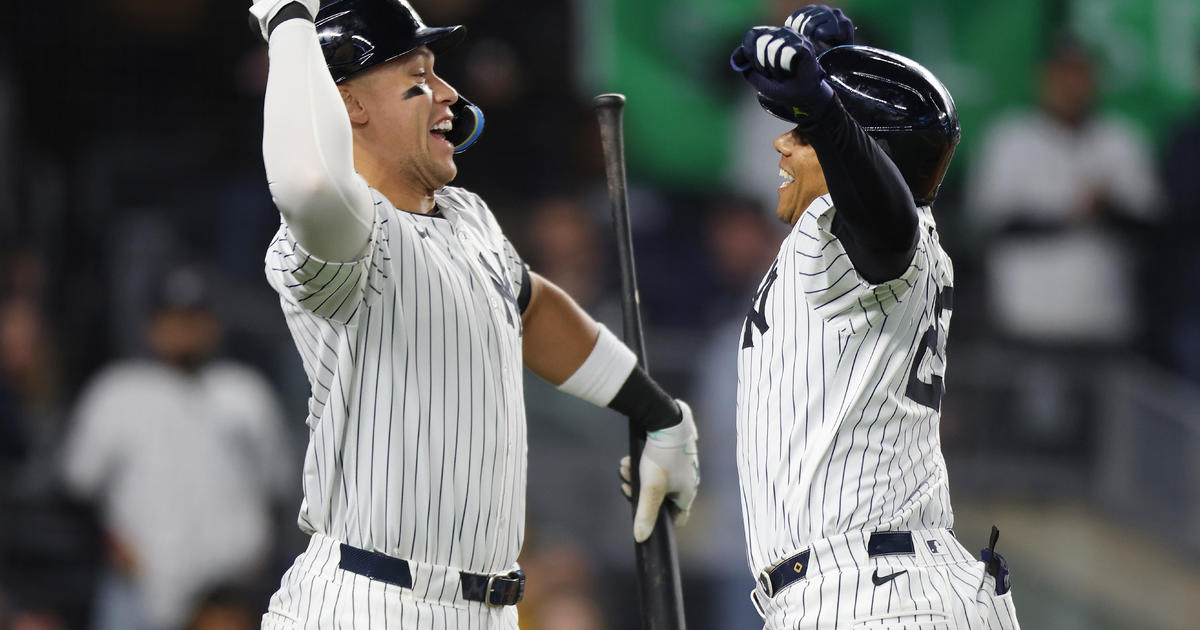Silverman: MLB Got It Right With Interleague Play
By Steve Silverman
» More Columns
Interleague baseball used to be one of the stop-the-presses moments of the year in sports.
Especially in cities like New York, Chicago and Los Angeles where the unfulfilled local rivalries had a chance to play out on the field instead of in the fans' imaginations. When interleague baseball arrived in 1997, it was a much needed breath of fresh air for the sport.
Fifteen years later, the novelty impact is gone. But that doesn't mean that interleague baseball is not a great idea and still one of the more satisfying aspects of the regular season.
Younger fans may not realize this, but there used to be a real rivalry between the American League and National League. Until that 1997 season, the only times the two leagues would meet on the field were in the All-Star game and the World Series. Arguments about which league was better were heard all over the country – including New York City – and they were made with fervor.
However, there was a distinct lack of evidence to make your case. During the 1960s and '70's, there was little doubt that the National League was better than the American League. The National League would come at you with pitchers like Bob Gibson, Tom Seaver and Juan Marichal. The American League would counter with Denny McLain, Sam McDowell and Jim Palmer. If it wasn't for Palmer's presence, it would have been a total wipeout.
It was more of the same with position players. Pete Rose, Willie Mays, Hank Aaron, Roberto Clemente and Johnny Bench would relish the chance to play against American Leaguers. The American League would counter with Carl Yastrzemski, Al Kaline, Brooks Robinson, Frank Robinson and Thurman Munson. The best A.L. player of the bunch was F. Robby, a former National Leaguer. Another decisive NL edge.
That superiority played out nearly every year in the All-Star game. The American League would often fair much better in the World Series, thanks in large part to the Oakland A's, who won three straight World Series between 1972-74. Earl Weaver's Orioles were also formidable, but they lost 3-of-4 World Series appearances. The Yankees wouldn't become a factor until 1976, as the long Yankee dynasty finally came to an end when they lost the 1964 World Series to the St. Louis Cardinals. That was Mickey Mantle's last World Series appearance.
One of the primary reasons for the National League edge was that it signed and developed far more black players than the American League teams. American Leagues came up short in developing and signing minority players through the 1970s.
Fast forward through the 1990s and all the way to the late 1990s when interleague play finally became reality. In addition to letting intra-city rivalries like the Yankees and Mets, Cubs and White Sox and Dodgers and Angels play out was the competition between the two leagues. No longer would it just be a matter of speculation as to which league played better baseball. They could decide it on the field.
Most years, about 250 interleague games are played during the regular season. While the All-Star game is not what it once was, it's not because they play interleague baseball. The World Series has not lost any of its luster because of interleague baseball.
There are some aspects of interleague play that are not perfect. Perhaps no team knows this better than the Mets, who are forced to play the Yankees six times every year. Compare this with the Texas Rangers, who get to play the Astros six time annually or the St. Louis Cardinals, who have often feasted on the Kansas City Royals.
But don't think for a second that the sport would be better without it. Truly great teams can often find ways to overcome the handicaps they face during the season.
The American League has dominated interleague play, winning the competition every year since 2004. That kind of run indicates the AL may have more of an edge now than the NL had in the '60's and a'70's.
For those who have complained about the decision to let All-Star game results decide homefield advantage in the World Series, perhaps it should go to the league that wins the interleague regular-season battle. It's a bigger sample size and it's the best way to judge the relative strengths of the two leagues.
The Yankees open interleague competition by hosting the Reds while the Mets travel north of the border to take on the Blue Jays. While the Yankees and Reds have World Series history on their sides, the Mets and the Blue Jays may be the more interesting series. The Mets have exceeded preseason expectations while Blue Jays are coming off a sweep of the Yankees and may be in playoff contention all season.
The novelty of interleague baseball may be gone, but the thrill remains.
The baseball snobs may hold their noses, but true baseball fans welcome it with open arms.
Steve Silverman is an award-winning writer, covering sports since 1980. Silverman was with Pro Football Weekly for 10 years and his byline has appeared in the Wall Street Journal, Playboy, NFL.com and The Sporting News. He is the author of four books, including Who's Better, Who's Best in Football — The Top 60 Players of All-Time. Follow him on Twitter (@profootballboy).



